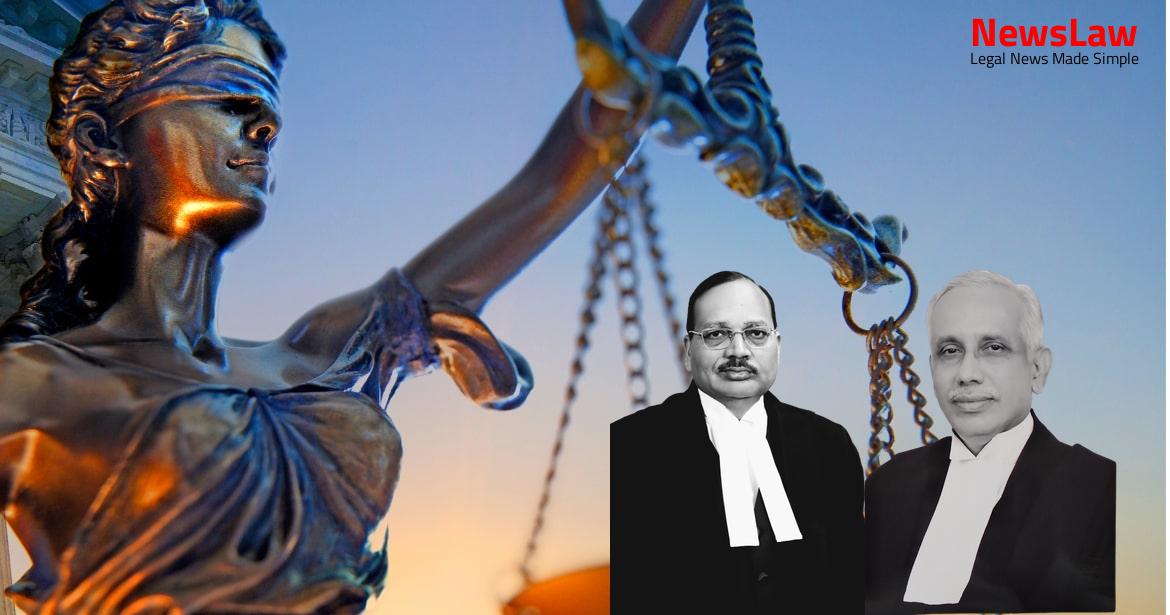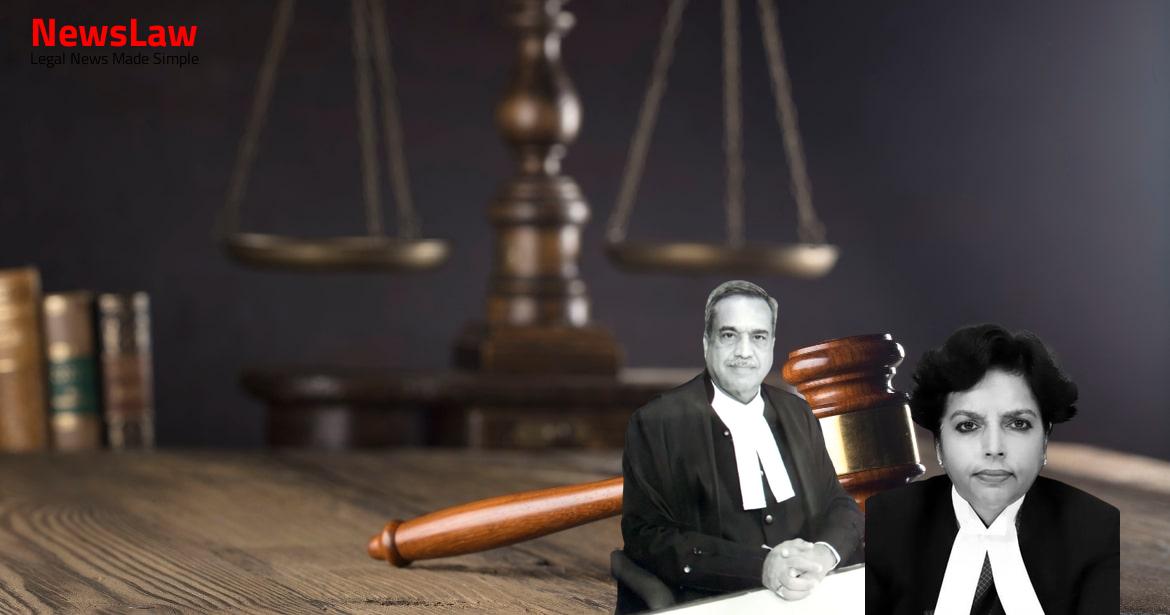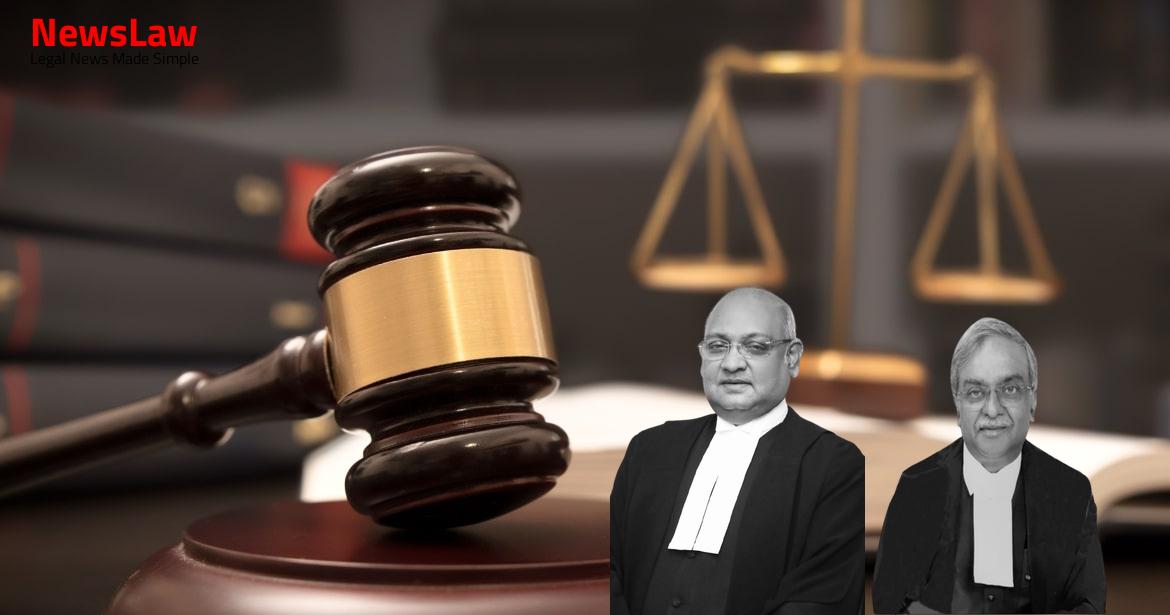Embark on a legal odyssey as the Supreme Court of India unravels the complexities of the case ‘The Unveiling of Justice’. Explore the twists and turns as the court delves into the evidence and testimonies to ensure fairness and uphold the law.
Facts
- The High Court convicted the appellant under Section 302 of the IPC instead of Section 302 read with Section 34 of the IPC.
- The appellant was also charged under Section 498A of the IPC.
- The Trial Court convicted all accused under Section 302 read with Section 34 and Section 498A of the IPC.
- Accused maintained the deceased properly for the first eight months but did not provide support later.
- The father of the deceased lodged a complaint alleging maltreatment and murder by the appellant and other accused.
- The prosecution’s case stated that the appellant and others murdered the wife of the appellant over dowry demands.
- The claim of suicide by the deceased was rejected, and evidence supported the murder theory.
- Accused nos. 2 to 4 were acquitted of all charges, and appellant was acquitted of the offence under Section 498A of the IPC.
- Accused were convicted for murder under Section 302 read with Section 34 of the IPC initially.
- The deceased had disclosed maltreatment by all accused over dowry demands of half tola gold and other items.
- Appellant received information about deceased being admitted to the hospital after serious maltreatment.
- The trial court accepted various circumstances against the appellant and other accused, including motive, custodial death of the deceased, non-disclosure of death to the complainant, false evidence of hanging, inquest and spot panchnama.
- The motive was established through evidence showing demands made on the deceased for gold, dress, and money for a bakery business.
- The High Court acquitted the appellant of the charge under Section 498A but found the appellant guilty under Section 302 of the IPC.
- No appeal was filed against the acquittal under Section 302 IPC.
- The trial court relied on witness testimony, including that of the deceased’s aunt, in making its findings.
- The appellant reiterated his demands and threats to kill the deceased if they were not met, leading to the deceased’s death 8 to 10 days after the threat.
Also Read: Judgment on Inconsistencies in Eyewitness Testimonies: Resham Singh v. State of India
Arguments
- The appellant argues that the resistance would have been evident if the deceased was throttled.
- The appellant contends that the deceased took her own life due to frustration over not having children while the appellant’s brother had a child.
- The appellant’s counsel highlights inconsistencies between the inquest report and post-mortem report.
- The appellant’s counsel argues that since accused nos. 2 to 4 were acquitted by the High Court, the appellant cannot be convicted.
- The appellant’s counsel asserts that the marriage between the appellant and the deceased was happy, indicating suicide by the deceased.
- The appellant’s counsel questions the logic of convicting the appellant under Section 302 of the IPC when evidence suggests suicide by the deceased.
- The appellant’s counsel emphasizes that doubts should benefit the appellant when the prosecution fails to establish guilt.
- The appellant’s counsel raises doubts about the accuracy and timing of the post-mortem report.
- The appellant’s counsel suggests that the post-mortem report may be related to someone else.
- Witness testimony, including that of the deceased’s father, supports the appellant’s actions in taking the deceased to the hospital.
- The discrepancy in the date of preparation of the post-mortem report was addressed in the examination of the doctor, where a valid explanation was provided for the delay.
- The High Court’s finding suggested that persons other than the acquitted accused may have acted jointly with the convicted accused in the crime.
- The judgment indicated that all the accused played a role in the murder through a joint act, with each having a specific part in the killing.
- Medical evidence pointed towards violence by throttling as the cause of death, indicating a specific method used in the crime.
- The appellant’s counsel referenced a case where death by throttling was established through medical evidence, supporting the argument in the current case.
- It was suggested that the appellant, if guilty, would have disposed of the body instead of seeking medical help, implying innocence based on actions taken after the incident.
- The killing of the appellant’s wife was attributed to demands not being fulfilled and carried out in furtherance of a common intention among all the accused residing together.
- All the accused participated in the crime and attempted to mislead by falsely claiming that the victim had hanged herself.
Also Read: Analyzing Legal Reasoning in a Poisoning Death Case
Analysis
- The post-mortem report and the evidence of the medical officer Dr. I.C. Kolle plays a crucial role in determining the cause of death in the case.
- Differences between hanging and strangulation are highlighted, like the presence of ligature marks, injuries to the muscles of the neck, and fracture-dislocation of the cervical vertebrae.
- The High Court considers the possibility of the victim being found unguarded and the impression injury on the thigh and ankle as potential evidence.
- In the case of throttling, resistance and struggling are expected, leading to marks of nails on the neck and face, which may be absent in hanging.
- The appellant’s failure to disclose the death to the complainant raises suspicion, and various testimonies regarding the deceased’s behavior strengthen the prosecution’s case of motive.
- Contradictions between the inquest panchnama and the post-mortem report are noted, with the post-mortem findings given more weight due to the expertise of the medical officers.
- The judgment discusses the application of Section 34 IPC and the acquittal of the co-accused, leading to a re-evaluation of the appellant’s involvement in the crime.
- The circumstantial evidence and the details of the crime scene, along with cross-examination points related to the injuries and cause of death, contribute to the overall analysis of the case.
- The distinction between hanging and strangulation in terms of physical evidence and typical findings in the post-mortem report is crucial for determining the manner of death.
- The High Court’s findings regarding custodial death and individual charges against the accused are also considered in the comprehensive analysis of the case.
- Acquittal of two out of three accused persons charged under Section 302 with Section 34 implies non-participation in the offense.
- Individual act of accused leading to victim’s death must be proven beyond doubt for separate conviction under Section 302.
- In cases of inconsistency between injuries noted in an Inquest and a post mortem note, the medical report of the doctor should prevail.
- The injuries noted in the post mortem and the evidence of P.W.1 indicate the death was caused by throttling.
Also Read: Chhabildas v. State of Maharashtra: Land Reservation and Acquisition Case
Decision
- The Sessions Judge acquitted all the accused
- No merit found in the appeal
- The appellant has been released on bail
- Bail bonds are cancelled
- Appellant must be taken into custody to serve out the remaining sentence
- The appeal is dismissed
Case Title: JAVED ABDUL RAZZAQ SHAIKH Vs. THE STATE OF MAHARASHTRA
Case Number: Crl.A. No.-001181-001181 / 2011



